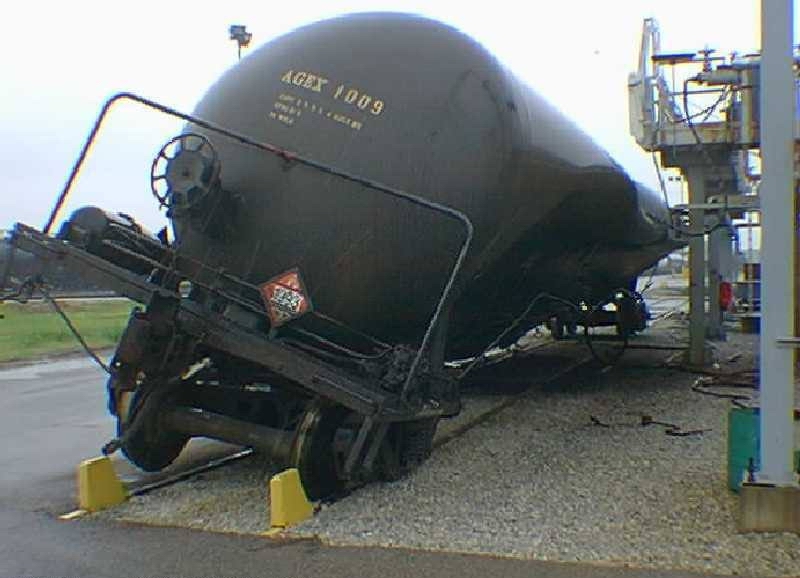
We had some workers who didn't understand Physics.We take a Tank car without a negative pressure relief valve. We give the crew steam cleaning equipment and tell them to steam clean our Tank Car. They Did a Great Job!!! The interior of the tank car was washed out & cleaned with steam. Then all the outlet valves were shut and the tank car was sealed. All the workers went home for the evening and when they returned, this is what they found. Apparently as the tank car cooled, it collapsed. The shell on these tank cars is 7/16th's thick steel. It is hard to imagine the forces it took to do this much damage, to such a large steel object. 
More info on collapsed Tank Cars: The most common (and commonly collapsed) railcar is the DOT 111A100 class or commonly called a "general purpose" tank car. These cars are rated to a test pressure of 100 psig and a minimum burst pressure of 500 psig. Minimum carbon steel plate thickness is 7/16 inch. For a 23,000 gallon car, the tank length is about 55 feet. For comparison purposes the "heaviest" pressure car commonly used is a 105J500, rated to a test pressure of 500 psig and a minimum burst of 1250 psig. They are made of 1 inch thick, high-strength steel plate. 
The shell didn't rupture nor was it over stressed -- the tube began collapasing at a very small imperfection in the cross-sectional circle (like a weld or bracket) that made it less than perfectly circular. As the non-circular imperfection became greater, the rate of collapse increased. As the longitudinal (cigar) shape was lost ( i.e., the cross-sectional moment of interia was reduced), it bent down under its own weight. In outer space, the tube would have just sucked in, without any bending. Neither has anything to do with the material strength of the steel. It's all geometry ratio's, what we call L/D (length/diameter). The car couldn't take -10 psig without some kind of yielding. The car should have had a negative pressure relief valve, but they cost money, and this kind of thing doesn't happen very often. Atmospheric pressure is about one million dynes per square centimeter. That translates into about 2092 pounds per square foot, since there are 478. dynes/cm2 in 1 pound/sqft. If the tank depressurized by 1/2 atmosphere that would leave 1000 pounds per square foot negative pressure on the shell of the tank car. Result: 1380 sq ft X 1000 pounds per sq ft = 1380000 net pounds force working on the hull of the tank car. The tank is made to hold things in by the expansive strength of the hull as the pressure inside pushes out and expands the tank; however, a compressive load would be unstable; just as it is easy to crush a beer can with your hand. The 1000 pounds per square foot that the atmosphere applies is more than enough. |
Return to Top